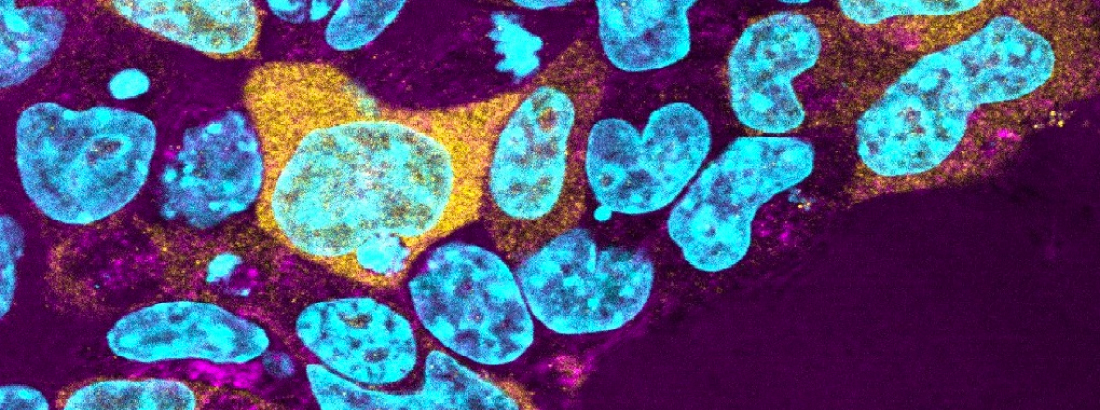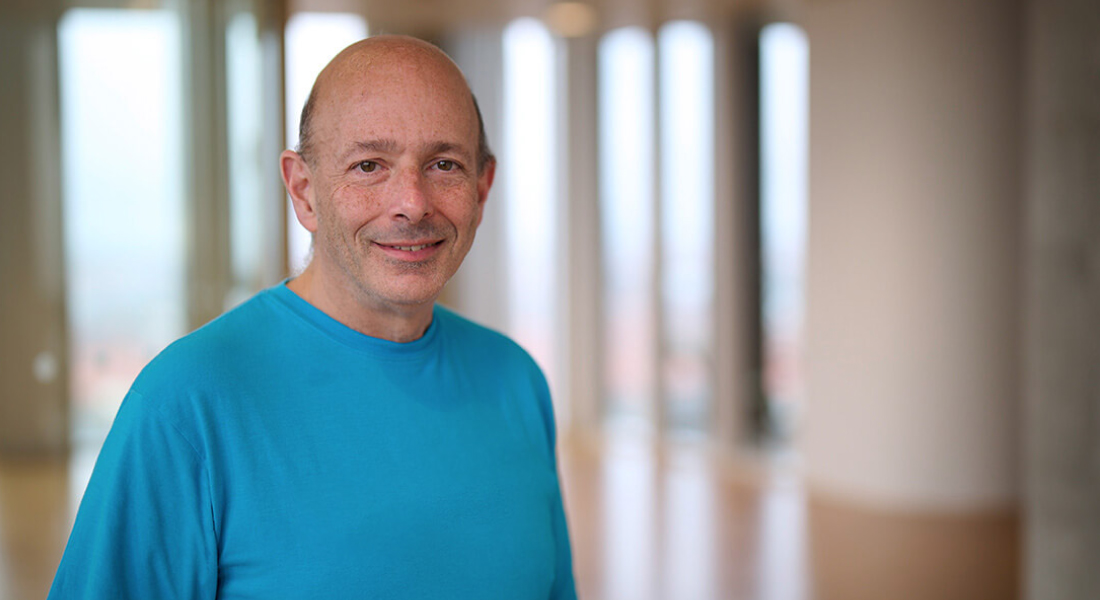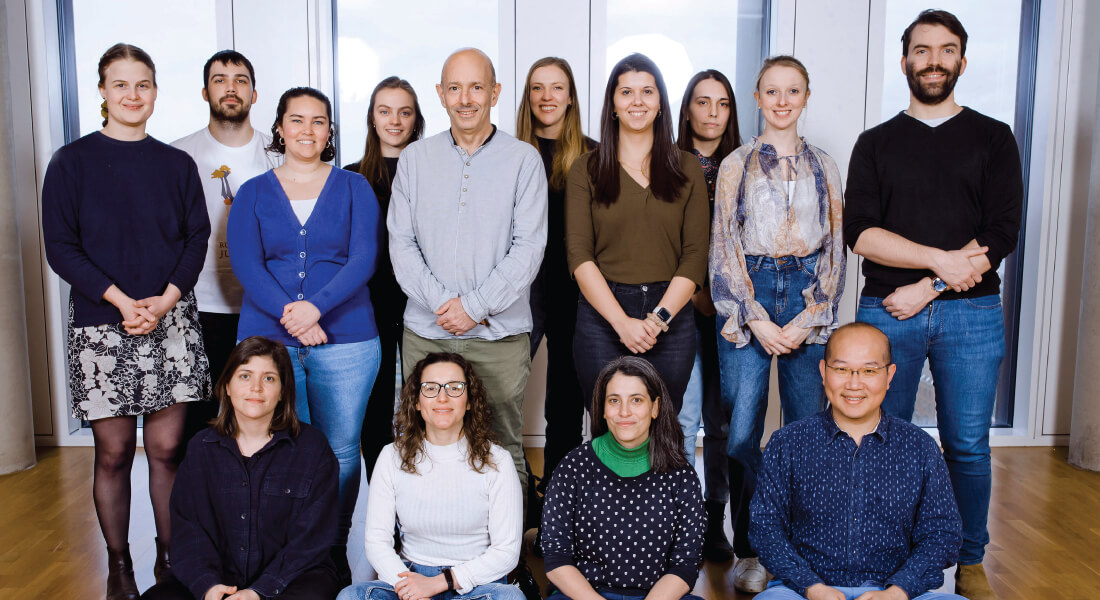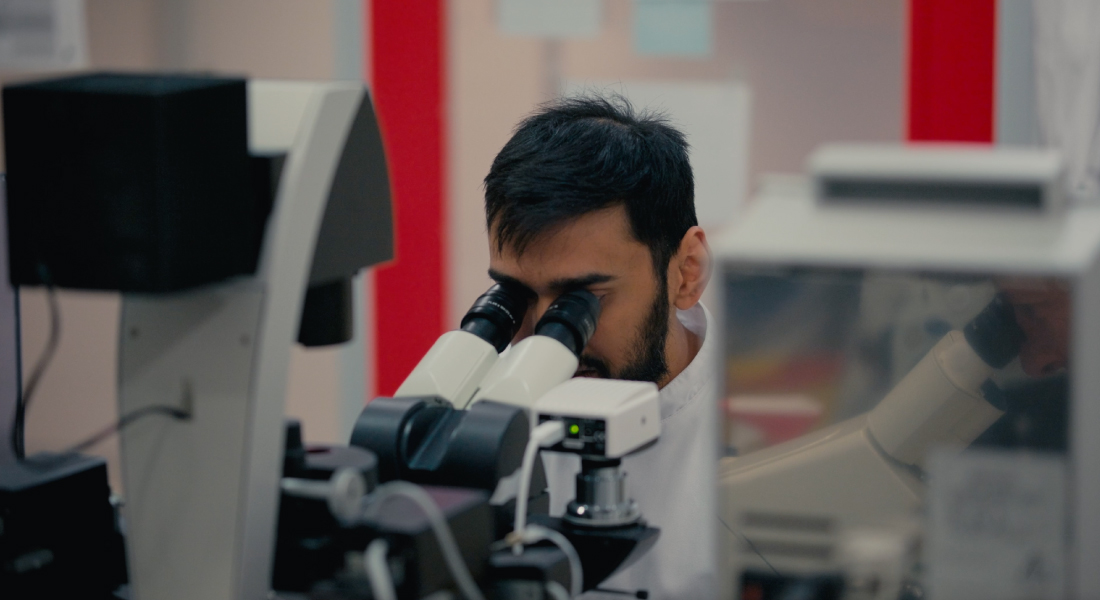Transcriptional basis for cell fate choice - Brickman Group
The Brickman Group aims to understand mechanism(s) governing cellular decision-making, competence and plasticity during development and differentiation. We seek to exploit the transcriptional underpinnings of cell states to develop new stem cell models at the same time as using these models to probe molecular mechanisms of enhancer activity and how enhancers interpret signaling at the level of transcription.

We focus on how transcription is regulated, how it integrates signaling response and how transcription factor behavior explains stem cell plasticity, potency, and differentiation. These fundamental studies into molecular mechanism have already led to innovations that include the first human hypoblast stem cells, drugs for improved liver and pancreas differentiation and new approaches to IVF culture.
FGF/ERK signaling
Based on our work on FGF/ERK signaling, we proposed a new paradigm for how transcription factor function; we believe they are enablers of signaling response, rather than determinants of transcription itself, supporting both plasticity (reversibility) in early embryonic stem cell differentiation and regulative development, in addition to potency and competence.
In pluripotent stem cells FGF signaling supports early reversable entry into differentiation by directly phosphorylating key transcriptional cofactors causing the disassociation of the RNA polymerase II and associated factors from the pluripotency network and its association with differentiation genes. However, as long as key transcription factors remain bound, this process can be reversed.
We find similar processes are at work in vivo, explaining the remarkably regenerative properties of early mammalian embryos, in addition to during the expansion of human ventral foregut, where transcription factor occupancy is coupled to proliferation. While transcription factor occupancy is central plasticity and potency, they are notorious for not acting independently.
Work from our group indicates that that stem cell potency is determined by cooperative interactions between different lineage affiliated transcription factors that then lay the groundwork for further differentiation, preparing enhancers to respond, while keeping them silent.
Our work is currently organized around three themes that exploit mouse and human embryos, mouse and human embryonic stem cells, stem cell derived embryo models and embryonic foregut derived organoid models.
1. Molecular biology of enhancer function
Our first theme focuses on the molecular biology of enhancer function, how transcription factors support enhancer plasticity, how ERK signaling stimulates induces enhancer commissioning, decommissioning and three-dimensional topology.
2. Transcription factors and metabolic influence in stem cell competence
Our second theme is focused on how transcription factors support competence for a change in cell state without inducing it. Here we ask how metabolic factors influence cooperativity, how different lineage specific factors interact to support self-renewal and stem cell states. We are using both embryos and human blastoid models to translate these ideas into culture conditions that improve primitive endoderm or hypoblast specification as a starting point towards improved embryo culture for IVF.
3. Transcriptional regulation in the endoderm lineage
Our third them focuses on transcriptional regulation in the endoderm lineage, the major source of the visceral organs and an important support lineage essential for implantation. Here we explore transcription factor codes that support early hypoblast (extra-embryonic endoderm), how proliferation or expansion in the foregut influences enhancer accessibility and how we can exploit our human endoderm stem cell models (Ventral Foregut Spheres and naïve extra-embryonic endoderm) to produce improved function cell types from the liver and pancreas, alongside creating better models for human implantation in vitro.
List of publications by Joshua Brickman
Selected publications
- Madeleine Linneberg-Agerholm, Annika Charlotte Sell, Alba Redó-Riveiro, Marta Perera, Martin Proks, Teresa E. Knudsen, Antonio Barral, Miguel Manzanares,
- Teresa E.Knudsen, William B. Hamilton, Martin Proks, Maria Lykkegaard, Madeleine Linneberg Agerholm, Alexander V. Nielsen, Marta Perera, Luna Lynge Malzard, Ala Trusina, Joshua M. Brickman. A bipartite function of ESRRB can integrate signaling over time to balance self-renewal and differentiation. Cell Systems. (2023)
- Yan Fung Wong, Yatendra Kumar, Martin Proks, Jose Alejandro Romero Herrera, Michaela Mrugala Rothová, Rita S. Monteiro, Sara Pozzi, Rachel E. Jennings, Neil A. Hanley, Wendy A. Bickmore& Joshua M. Brickman. Expansion of ventral foregut is linked to changes in the enhancer landscape for organ-specific differentiation. Nat Cell Biol 25, 481–492 (2023). Doi:1038/s41556-022-01075-8
- Woranop Sukparangsi, Elena Morganti, Molly Lowndes, Hélène Mayeur, Melanie Weisser, Fella Hammachi, Hanna Peradziryi, Fabian Roske, Jurriaan Hölzenspies, Alessandra Livigni, Benoit Gilbert Godard, Fumiaki Sugahara, Shigeru Kuratani, Guillermo Montoya, Stephen R. Frankenberg, Sylvie Mazan& Joshua M. Brickman. Evolutionary origin of vertebrate OCT4/POU5 functions in supporting pluripotency. Nat Commun 13, 5537 (2022). Doi:1038/s41467-022-32481-z.
- William B. Hamilton, Yaron Mosesson, Rita S. Monteiro, Kristina B. Emdal, Teresa E. Knudsen, Chiara Francavilla, Naama Barkai, Jesper V. Olsen & Joshua M. Brickman.Dynamic lineage priming is driven via direct enhancer regulation by ERK. Nature 575, 355–360 (2019). Doi:1038/s41586-019-1732-z
- Wendy Bickmore (MRC HGU Edinburgh, UK)
- Jesper Olsen, Anja Groth, Michael Lund Nielsen and Nils Krietenstein (NNF Center for Protein Research, UCPH, Denmark)
- Jonas Thue Treebak (Center for Basic Metabolic Research)
- Mark Bradley (Queen Mary, University of London, UK)
- Tariq Enver (UCL Cancer Institute, UK)
- Ala Trusina and Mogens Høgh Jensen (Niels Bohr Institute, UCPH, Denmark)
- Timothee Lionnet (New York University, USA)
- Daniel Schraivogel and Andreas Gschwind (Steinmetz group, EMBL & Stanford University)
- Sylvie Mazan (Observatoire Océanologique in Banyuls-sur-Mer, France)



